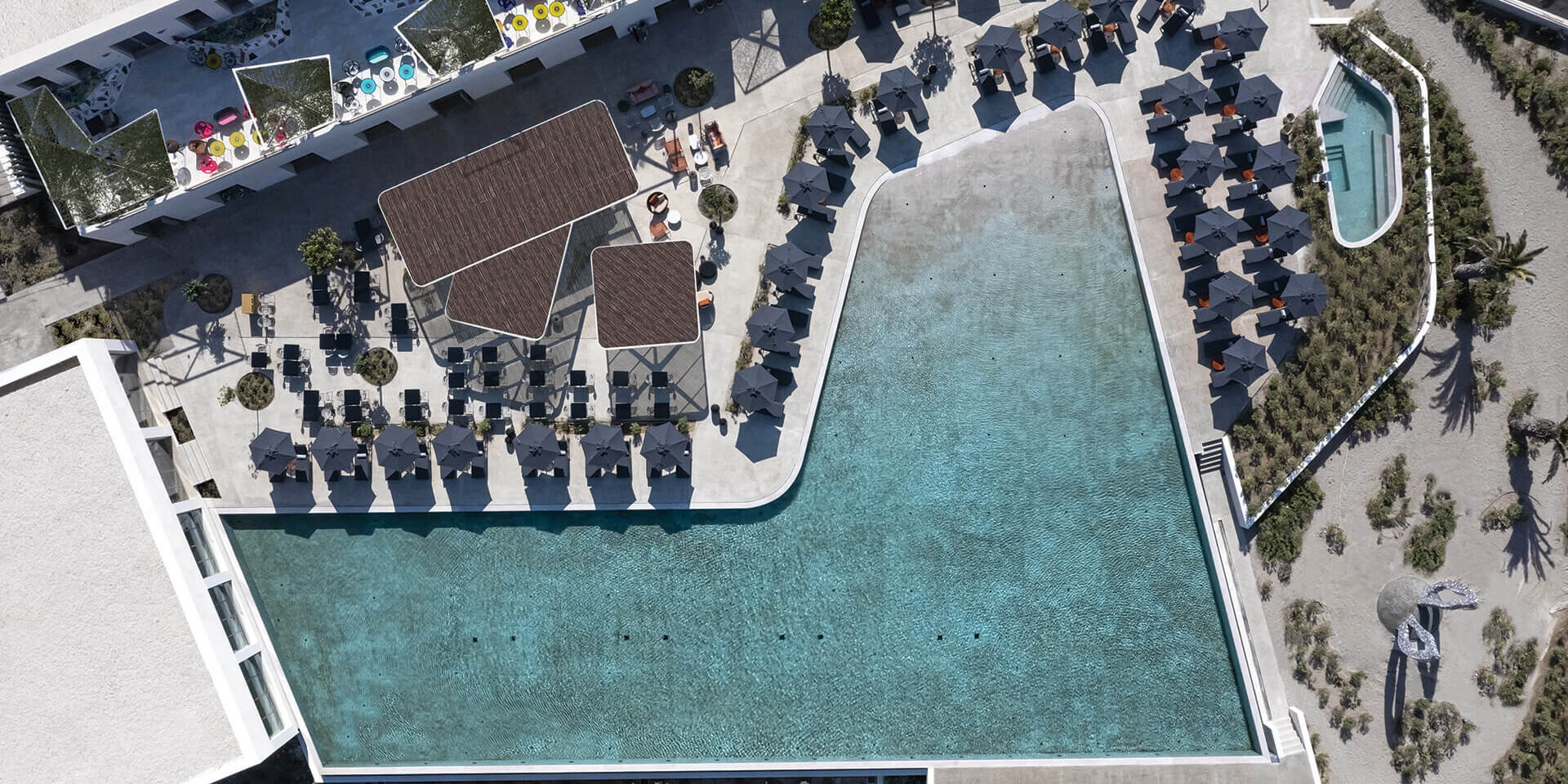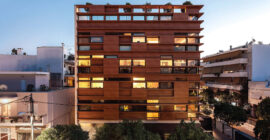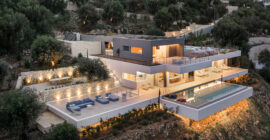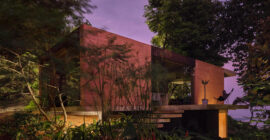Volcanic landscape
The new resort, located near Messaria, seamlessly blends old and new aesthetics. The project refurbishes existing hotel units and connects them with new structures, resulting to a total capacity of 121 rooms. The outdated functional layouts are being reimagined in favour of a cohesive, modern design that views the surrounding landscape as a key element.
Integration with Nature
The reception is accessed through a garden filled with climbing plants, providing ample shade. A suspended pergola made of wire mesh discreetly hides its supports and plant trunks. On either side of an accessibility ramp, a water path flows over stepped lava slabs, paying homage to the island’s volcanic history.
The reception itself is an open structure adorned with billowing curtains. The main pool begins at the entrance, framing a stunning view of the sea, and follows a curved path towards the restaurant, forming an artificial beach-like area. Natural materials dominate the water area: at the pool bar, makuti covers the lower part on the pergolas, while the restaurant roof features illuminated wicker baskets. The presence of nature continues in the upstairs bar, which boasts a large, planted wall, as well as on the terrace, where new metal pergolas support an array of climbing plants.

Material Pallet & Vegetation
In both the bar and the central internal staircase, mosaic floors are paired with marble, creating surfaces rich in color. These material combinations preserve the memory of the volcanic island fragments and the diverse pavings found in the alleys of Santorini. The introduction of earthy, charcoal, and reddish hues subverts the traditional Cycladic color palette, enriching the off-white architectural volumes with sharpness and contrast.
A new garden, situated lower than the pool surface, leads to the spa. This introspective building features gentle curves that unfold around a linear courtyard. Brick partitions create porous boundaries and a shadow interplay, reintroducing one of the most successful architectural idioms from Santorini’s reconstruction following the 1956 earthquake.

Architectural Geometries
The architectural volumes of the new suites are developed in a staggered manner, nestling into the natural landscape, reminiscent of a traditional settlement. Typical Cycladic geometries are reinterpreted through singular, fragmented gestures, acquiring a subversive dynamic aesthetic that gradually unfolds within the space. The shutters of the suites evoke the distinctive vineyards of Santorini, with their characteristic “kouloura” shapes creating a unique interplay of light and shadow.
Within the existing linear buildings surrounding the pool, the central circulation corridor has been replaced with a new open-air pathway, which features abundant shading, large, two-storey openings, and brick patterns that act as filters. The incorporation of curved grooves becomes a key feature in shaping the rooms, both on the facades and the interior, where modern “caves” are formed.
The ground-level rooms feature courtyards with metal pergolas covered in makuti, visually connecting them to the surrounding fields. In the existing bungalows, fences following the terrain contours construct private gardens in fluid, organic shapes. Throughout the existing unit, canopies were removed, while the design adopted an architectural language of sloping sections and freestanding walls. This facade treatment not only adds variety to the overall appearance but also simulates shadow interplay amongst the array of volumes.






